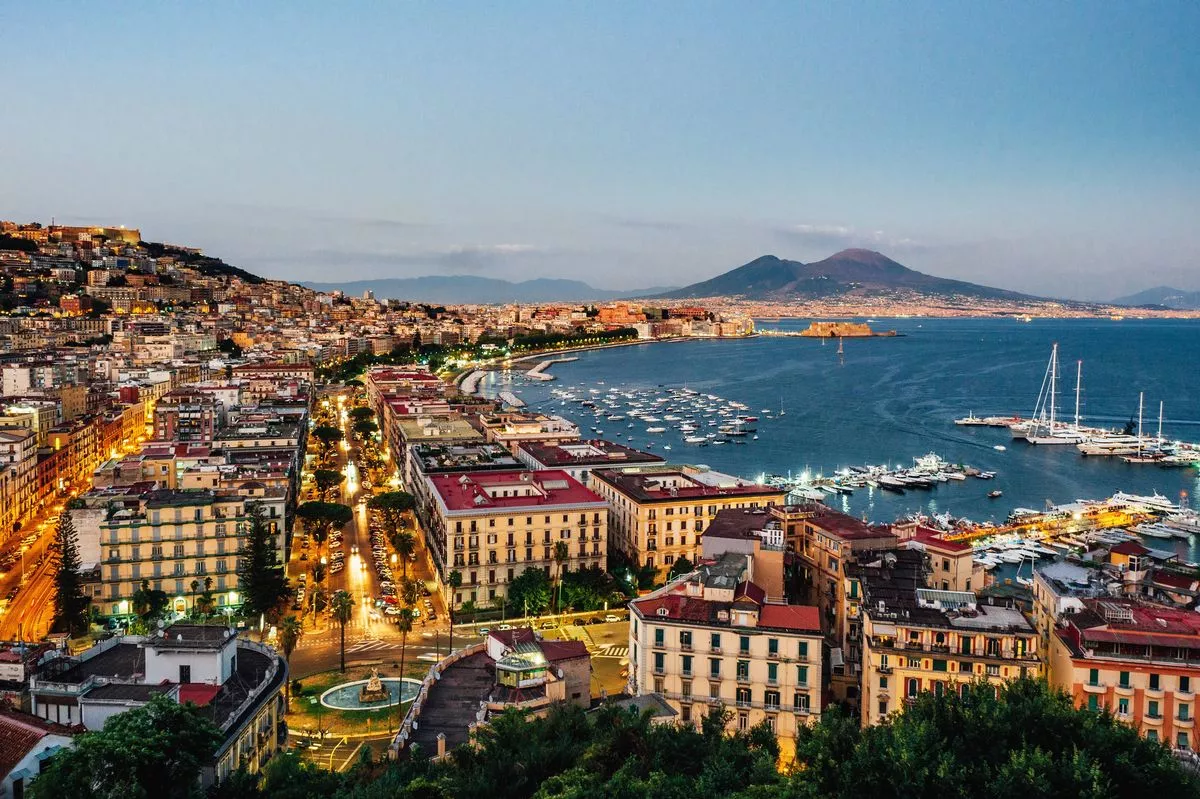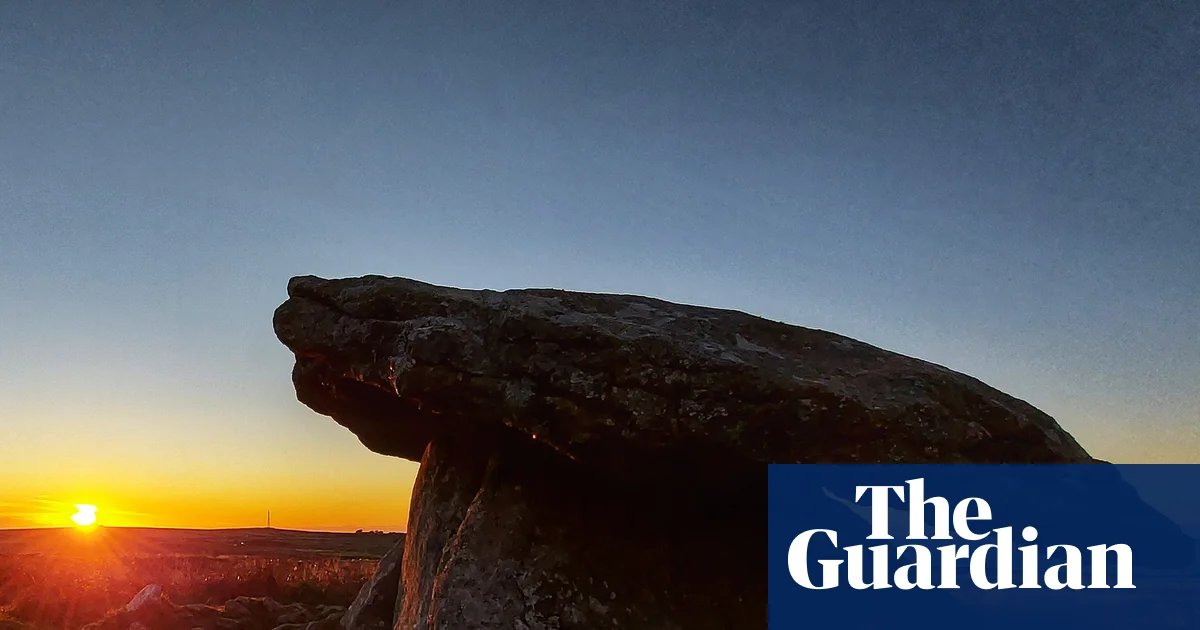
It has been a year. And for many of us, not a great one. Fires, political chaos, rising unemployment, the loss of beloved cultural icons — it’s understandable if you want to toss 2025 in the trash heap where it belongs.
And you should, at least symbolically. Ending a collective or personal era with a closing ritual can be therapeutic and allow you to make room for something new. The goal is not to work abracadabra-type magic, but to “enact a symbolic shift,” as University of British Columbia anthropologist Sabina Magliocco puts it.
“When you do a New Year’s ritual, you are symbolically shifting to a new beginning,” she said. “That might involve rituals to usher in good luck or health, more prosperity, more creativity, or just out with the old, in with the new.”
Humanity has been enacting rituals to transition from one year to the next for millennia, and they are part of our lives today — drinking sparkling beverages, watching the ball drop in Times Square, cheering as the clock strikes midnight — these are all ways of celebrating the completion of one cycle and welcoming the start of the next one with joy and the hope that this time may be better.
We’ve collected and created 25 practices to help you say goodbye to 2025. Some of our rituals are serious, others more lighthearted, yet all should be done with intention for maximum effect. We’ve included some places around L.A. that would be ideal for these activities — for instance, Downtown’s Rage Ground where you can (safely) smash a car, or San Pedro’s Cabrillo Beach, where you can plunge into water that’s freezing by L.A. standards (it’s about 59 degrees).
So sweat it out, sweep it out, dance it out or melt it away. Whichever way you choose to say good riddance, we hope it brings you a bit of peace and helps you slide purposely into the new year (which surely, hopefully, God-willing has to be better than the one we just finished, right?).
— Deborah Netburn
1. Scream into the void
“Scream therapy,” or “primal scream therapy,” dates back to the early ‘70s and is an underrated — and free — way to release bottled-up tension and anger (or a relentlessly stressful year). Find an open expanse with a dramatic view — check out our guide to shout-worthy spots in L.A. — take a few deep breaths, engage your core and let out an unbridled scream. Not ready to howl in a place where other people may be in the vicinity? A primal scream into a pillow at home can offer a similar sense of release. — Deborah Vankin
2. Sweat 2025 out of your system
Koreatown’s Wi Spa, open 24/7, has five progressively hot saunas in a coed community space. But its single hottest sauna — one of the toastiest in all of L.A. — is the Bulgama sauna. It looks like an igloo from the outside, though the interior is made mostly of oak wood. The sauna is set at an intense 231-degrees (by contrast, my gym’s dry sauna is 160-180 degrees). There are no benches to sit on; guests lie on the floor or sit upright against the wall, their faces flushing scarlet and sweat dripping down their cheeks and limbs. Tough it out for as long as you possibly can, perhaps while meditating on all you want to let go of, and sweat out every bit of this difficult year. Just be sure to hydrate afterward. — D.V.
3. Roll down a hill
If the heaviness of 2025 has you feeling stuck, shake up your perspective by making like a 5-year-old and rolling down a grassy hill. Luckily, L.A. is filled with hills perfect for rolling, including the popular Hancock Park near the La Brea Tar Pits and Museum. I guarantee that you’ll feel different at the end of your roll than you did at the start. (And if I’m wrong, try climbing the hill and rolling down again!) — Deborah Netburn
4. Jump into the ocean
The “polar bear plunge” is a popular tradition in many places, including San Pedro’s Cabrillo Beach, where people have been jumping into the water on New Year’s Day for at least 73 years. The Cabrillo Beach Polar Bears name a king and queen and hand out polar bear certificates — in fact, so many people joined in last year that the club ran out of certificates. The water in San Pedro is typically about 59 degrees. But this tradition persists in places much colder — for instance, Scheveningen, the Netherlands. There, as many as 10,000 brave bathers show up each New Year’s Eve to dip into the North Sea, which is usually between 37 and 48 degrees Fahrenheit. — Christopher Reynolds
5. Rage … and smash a car!
When I’m angry — like fuming, stomping, raging mad (which is a lot, lately, considering the state of, well, everything) — I often think of Swiss artist Pipilotti Rist’s video, “Ever Is Over All.” In it, Rist saunters down an urban sidewalk in a light blue sundress smashing car windows as she goes. The crinkly, cacophonous sound of shattering glass is amplified each time she bashes a car. Sounds awesome, right? You can do the same at L.A. Rage Rooms such as Rage Ground and Break Room Los Angeles. Visitors don protective gear while wrecking an entire automobile — windows, doors, headlights and all — to the angry playlist of their choice. Unleashing rage can be cathartic and healing — not a bad way to put 2025 behind you for f— good! — D.V.
6. Burn some incense — or join a safe, fire department-sanctioned communal blaze
Maybe you’ll spark some sage, as people do when hoping to rid a room of bad vibes. You could also burn a little incense, cedar, yerba santa, palo santo, rosemary, mugwort, juniper or sandalwood. Or, if you crave a bigger blaze, you could head up to Solvang, where on Friday, Jan. 9, the Santa Barbara County Fire Department will supervise a community Christmas Tree Burn. Local authorities bill the event as “a powerful safety demonstration” in the empty lot next to the Mission Santa Ines (1760 Mission Drive). But you’ll know that it’s really about purging the vile remnants of the last year. — C.R.
7. Walk a labyrinth
Labyrinths can be a great tool for release. To make a labyrinth walk extra meaningful, find a trinket or stone that represents 2025 to you and then walk slowly toward the labyrinth’s center, infusing the stone with whatever you want to leave behind in 2025. When you get to the center of the labyrinth, drop the stone, and breathe out the year. As you leave the center, imagine filling yourself up with your hopes for the new year. Looking for a labyrinth to walk? Check out our list of great labyrinths in the L.A. area, including the one at Peace Awareness that uses the same pattern design as the labyrinth at the Chartres Cathedral in France — D.N.
8. Travel through time
If you visit the Time Travel Mart in Echo Park or Mar Vista, you’ll come to understand that its true mission is to promote literacy and writing skills among kids. But the goofball retail goods in both shops — alleged supplies for chrononauts — are a comfort to anyone seeking maximum distance from 2025. Buy candles honoring patron saints of time travel (including theoretical physicists Stephen Hawking, Albert Einstein and Ronald Mallett). Pick up some robot milk or canned mammoth. Or, perhaps best of all, grab a copy of “The Time Traveler’s Almanac,” a 2013 collection of 72 literary “journeys through time” by writers including Douglas Adams, Isaac Asimov, Ursula K. Le Guin, George R.R. Martin and H.G. Wells. As the largest collection of time-travel stories ever assembled, it won’t just take you to 2026, but far beyond. — C.R.
9. Dance it out
Shake your booty, swing your limbs, wriggle your hips. Literally shake off the year while working up a sweat at any number of dance events. I do it at Zumba class; others at nightclubs and dance parties. LA Dance Project offers weekly, community dance classes for all levels; Wiggle Room holds improvisational movement workshops; Pony Sweat, a “fiercely noncompetitive dance aerobics celebration,” holds $10 classes on Monday nights; and Ecstatic Dance LA is a “substance-free, all ages community celebration” of dance. Even the Los Angeles Public Library holds free ‘80s-era dance classes. Or travel to another part of the world for the night at ¡BAILE!, a recurring world music dance party — one of many in L.A. You’ll forget all about 2025, if just momentarily. — D.V.
10. Challenge yourself with one of L.A.’s hardest hikes
You made it through a hard year. Celebrate by making it through a hard hike. For a serious challenge, try the Vital Link Trail at Wildwood Canyon Park in Burbank where you’ll do an elevation gain of 1,700 feet in just two miles. Because the trail is sandy and has some erosion, it’s best to navigate it with trekking poles. Also, remember that “challenging” is a relative term. If Vital Link Trail is not for you, check out other options on our list of local hikes for all skill levels. — D.N.
11. Write a year-end letter
This could be a pep talk, a condemnation of the last 12 months, a breakup letter to your past self or a hopeful letter to your future self. Or take control of your life by starting a diary, as the main character does in the Helen Fielding novel and subsequent Renée Zellweger movie “Bridget Jones’s Diary.” Maybe with less smoking, drinking and mixing it up with Hugh Grant. — C.R.
12. Visit a cemetery to reflect on the past
L.A.’s legendary Hollywood Forever Cemetery just held an end-of-year event with a cord-cutting meditation meant to help participants “dispel the shadows” of their lives and let go of what no longer serves them. You could create a similar ritual. Visit one of the city’s many cemeteries and as you stroll through the space, think about laying to rest what’s been weighing on you most this past year. — Michelle Woo
13. Be your own Death Bear
More than a decade ago, New York performance artist Nate Hill created a Death Bear character. He would appear at people’s homes in a strange black PVC costume, then remove items that triggered bad memories and take them away forever to his Death Bear Cave, location unspecified. Hill seems to have retired Death Bear, but you could always create your character to vanquish bad memories. — C.R.
14. Bury the year
You could throw 2025 in the trash, but consider composting it instead. Write down “2025” on a small scrap of paper along with an few aspects of the year you would like to leave behind. Bury the paper in a garden or a flower pot along with some seeds of your choice. Over the next few weeks, watch with satisfaction as a budding seedling transmutes 2025 into something beautiful and fresh. — D.N.
15. Shed 2025 along with your dead skin with an intense body scrub
Vigorous, bracing, borderline painful, there is nothing like a no-frills full-body scrub at one of L.A.’s many Korean spas. For as little as $50 you will feel like you’ve removed the hard crust of the bygone year from your body, emerging shiny, soft and new. Let the shedding begin! — D.N.
16. Cut your hair
Or change it. Various cultures have ideas about this and exactly when you should do it. I say the sooner we turn the page, the better. Along with shedding skin, getting a trim is one of the most literal ways you can change your body to signal a new era. — C.R.
17. Purge your closet — and donate
This summer, the fluff and fold I bring my laundry to burned down — with three enormous bags of my clothing and linens inside. At first I was upset: beyond its practical function, our clothing is an extension of our identity and often beloved items house emotional memories from the places they’ve traveled to. It felt like a loss, not to mention a financial burden. But surprisingly quickly, silver linings surfaced. My closet was roomier and more navigable — it was easier to put outfits together. Friends and family offered blankets, sheets and sweaters, and I felt supported. I somehow also felt lighter? A purposeful, DIY closet purging can feel cathartic at the end of year. And in hauling off a bag or two of your clothing to Goodwill or the Salvation Army, you’ll not only be releasing a little bit of 2025, but helping others, who need your recycled goods, in the process. — D.V.
18. Cry in the shower
I get my best creative ideas in the shower. And I indulge my fiercest sobbing sessions there as well. The act of crying — anywhere — lowers stress hormones such as cortisol and releases feel-good hormones like oxytocin. But there’s something about being in a cozy, private space, ensconced by rushing water and plumes of steam, that allows me to fully release and opens the floodgates. Try it. Bonus: no tear-stained face afterward. — D.V.
19. Rearrange your house
Switch up the energy in your home by switching up the placement of your furniture. It will help you see your space, and perhaps your life, in a fresh light. The bed in that corner? That was so 2025. The dresser on that wall? Last year’s news! Try working with the items you have before going out to buy something new. — D.N.
20. Sweep the worst of 2025 out the door
Deep cleaning followed by ritually sweeping misfortune and bad energy out of your home before the start of the Lunar New Year is a tradition in Chinese culture. I’ve also seen ritual sweeping practiced by modern witches and other spiritual questers. The ritual itself is simple but deeply symbolic: For a fresh start to the new year, fully clean your house top to bottom and then finish by holding a broom just a bit off the floor and use a sweeping motion to push the bad energy out of your house. — D.N.
21. Make a physical threshold and cross it
New Year’s Eve party idea: Just before midnight create a physical threshold on the ground using a stick, a piece of string, or draw an actual line in the sand if you happen to be at the beach (this is L.A. after all). As the clock strikes midnight, invite guests to cross the threshold one by one and cheer as you step into 2026 and leave 2025 behind. — D.N.
22. Watch 2025 melt away
Find a small candle and carve “2025” onto the side of it using a small knife. Light the candle and let it burn until 2025 has melted away. — D.N.
23. Watch the sunset
Is there a more symbolic way to say farewell to 2025 than watching the sun literally dip below the horizon for the final time on this god-awful year? Consider this nature’s ball drop. — D.N.
24. Toss 2025 into the waves
Tashlich is a Jewish new year ritual of symbolically releasing your sins by throwing them into a natural body of water. When I was a kid, my family used bread crumbs to represent our sins. Now I use small stones or torn-up bits of leaves to keep from polluting the environment. Whatever you use, hold it in your hand and imagine what it is that you want to release. Then toss it into the water and imagine yourself letting it go. The Jewish new year holiday, Rosh Hashanah, is celebrated in early fall, but there’s no reason you can’t give this ritual a whirl on the Gregorian calendar’s new year too. — D.N.
25. Take a final photo
2025 may not have looked like how you hoped it would look, but now you are in control. As the year draws to a close, set yourself a task of taking one final photo of the year that is meaningful to you. Sad or hopeful, lush or desolate: you decide. Perhaps it is someone or something you love. Or a representation of the loss you experienced. We take photos all the time without thinking. Choose to make this one count. — D.N.




































